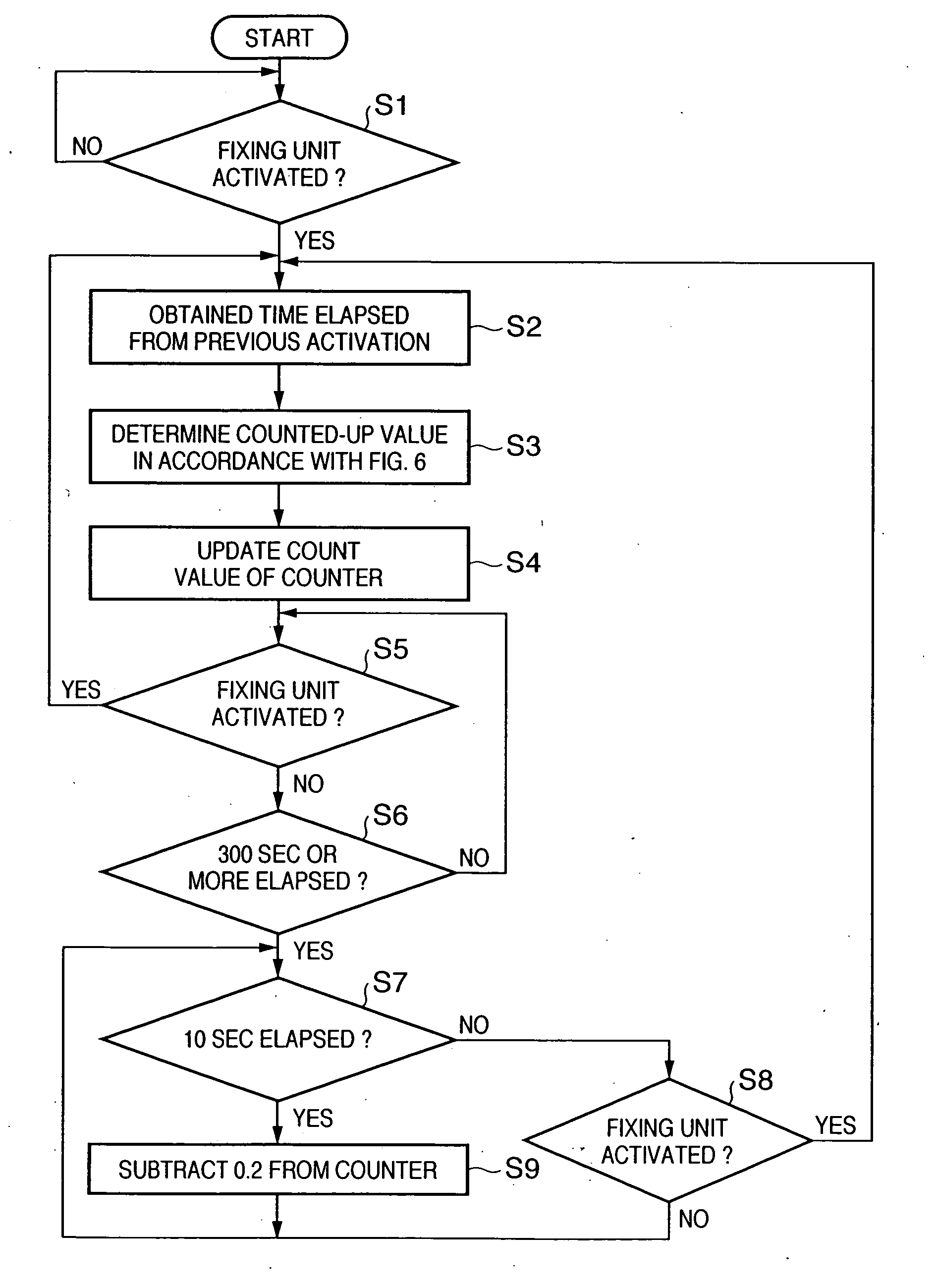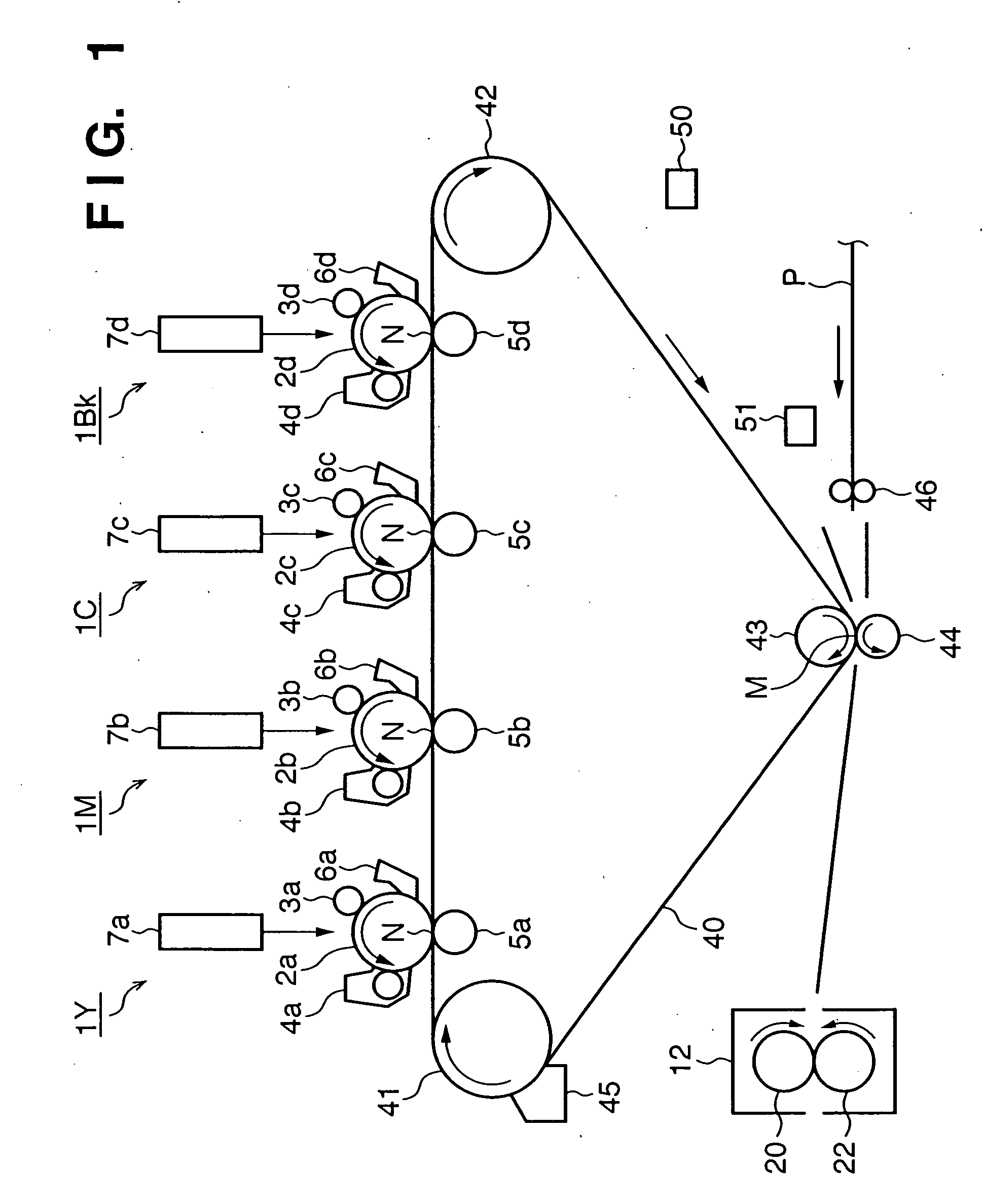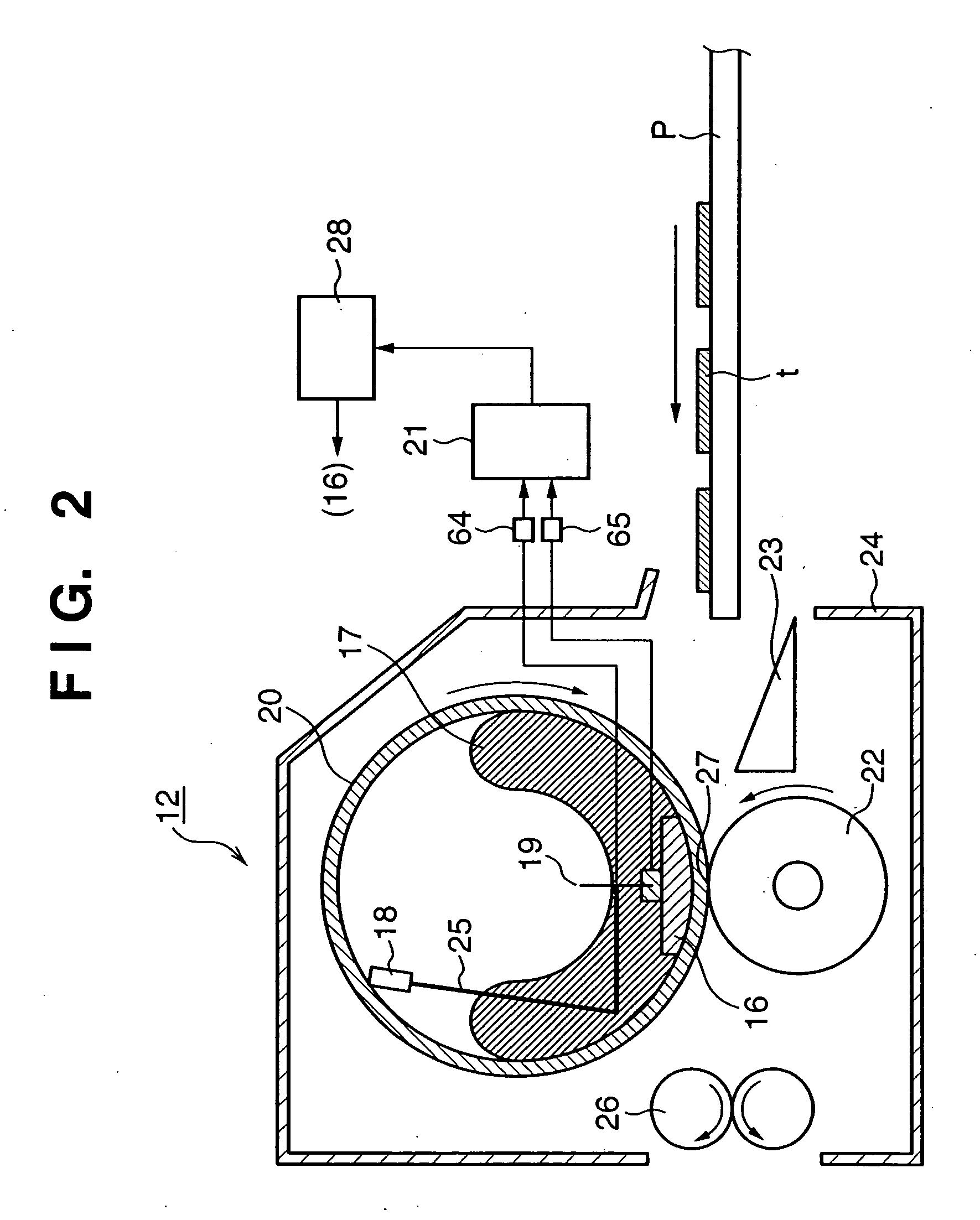Image forming apparatus and control method thereof
- Summary
- Abstract
- Description
- Claims
- Application Information
AI Technical Summary
Benefits of technology
Problems solved by technology
Method used
Image
Examples
first embodiment
[Description of Image Forming Apparatus]
[0063]FIG. 1 depicts a schematic view for explaining the configuration of the printing part of a color image forming apparatus according to the first embodiment of the present invention. The image forming apparatus according to the first embodiment is an electrophotographic tandem type full-color printer.
[0064] The image forming apparatus comprises four image forming parts (image forming units): an image forming part 1Y which forms a yellow image, an image forming part 1M which forms a magenta image, an image forming part 1C which forms a cyan image, and an image forming part 1Bk which forms a black image. These four image forming parts are arrayed in line at predetermined intervals.
[0065] The image forming parts 1Y, 1M, 1C, and 1Bk respectively have photosensitive drums 2a, 2b, 2c, and 2d. The photosensitive drums 2a, 2b, 2c, and 2d are surrounded by charging rollers 3a, 3b, 3c, and 3d, developing devices 4a, 4b, 4c, and 4d, transfer rolle...
second embodiment
[0152] The second embodiment will describe a method of, when the intermittent time is sufficiently long, detecting the temperature of a press roller 22 by using a sub-thermistor 19 in contact with a fixing heater 16 in the use of the fixing unit 12 described in the first embodiment, and thereby accurately controlling the temperature of the press roller 22.
[0153] A fixing unit 12 in the second embodiment has the same configuration as that in the first embodiment, and a description thereof will be omitted. The second embodiment is different from the first embodiment in that when the intermittent time is sufficiently long, the temperature of the press roller 22 is detected and a count value corresponding to the detected temperature is set to a counter in the EEPROM 213.
[0154] A method of counting up the start-up count is the same as that in the first embodiment describe above, as shown in FIG. 6, and a description thereof will be omitted.
[0155]FIG. 14 depicts a table for explaining ...
third embodiment
[0167] In the third embodiment, the present invention can be applied to a fixing unit different from the fixing unit described in the first and second embodiments, and the same effects can be obtained. In the fixing unit adopted in the third embodiment, a thermistor cannot detect the approximate temperature of a press roller 22. However, by applying the present invention to this fixing unit, the temperature of the press roller 22 can be predicted at high precision regardless of the use state of the fixing unit, and a control temperature complying with the temperature of the press roller 22 can be selected.
[0168] The third embodiment will be described by using a so-called induction heating type fixing unit as a fixing unit different from the fixing unit described in the first embodiment.
[0169]FIG. 15 depicts a schematic view showing the configuration of an electromagnetic induction heating type fixing unit according to the third embodiment of the present invention.
[0170] A magneti...
PUM
 Login to View More
Login to View More Abstract
Description
Claims
Application Information
 Login to View More
Login to View More - R&D
- Intellectual Property
- Life Sciences
- Materials
- Tech Scout
- Unparalleled Data Quality
- Higher Quality Content
- 60% Fewer Hallucinations
Browse by: Latest US Patents, China's latest patents, Technical Efficacy Thesaurus, Application Domain, Technology Topic, Popular Technical Reports.
© 2025 PatSnap. All rights reserved.Legal|Privacy policy|Modern Slavery Act Transparency Statement|Sitemap|About US| Contact US: help@patsnap.com



